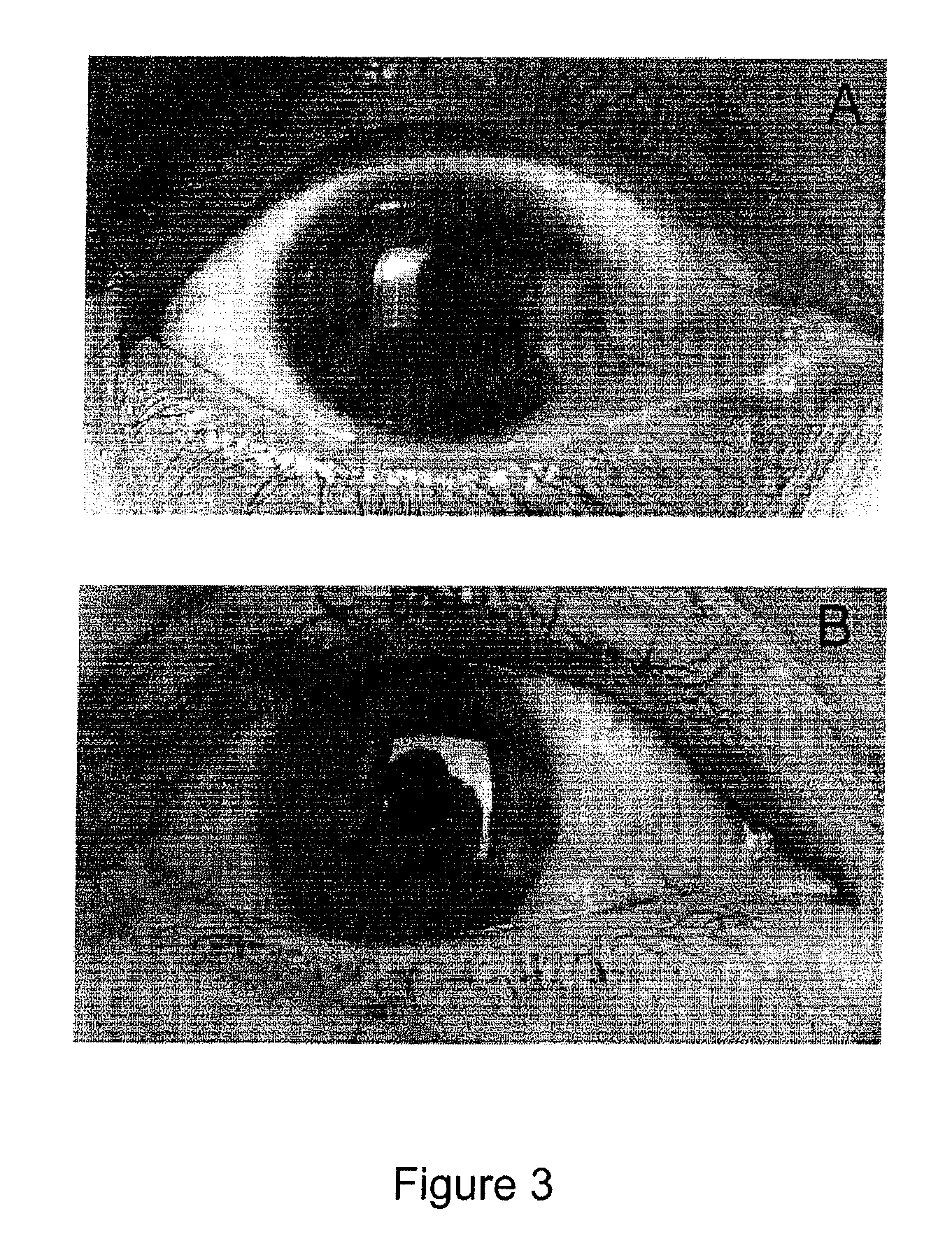Use of 2,5-dihydroxybenzene for the treatment of ocular diseases
a technology of dihydroxybenzene and ocular disease, which is applied in the direction of anti-noxious agents, drug compositions, immunological disorders, etc., can solve the problems of hemangioblastoma, no effective treatment approved by health authorities for hemangiomas, and difficult treatment of other vascular tumors such as hemangioblastomas
- Summary
- Abstract
- Description
- Claims
- Application Information
AI Technical Summary
Benefits of technology
Problems solved by technology
Method used
Image
Examples
example 1
Preparation of Lotions
[0631]Lotions comprise from about 0.001% to about 30% of the compounds of Formula I, from 1% to 25% of an emollient and the suitable amount of water. Examples of emollients are:[0632]I. Hydrocarbon waxes and oils. Such as mineral oil, petrolatum, paraffin, ceresin, microcrystalline wax, polyethylene and perhydrosqualene.[0633]II. Silicone oils such as dimethyl polysiloxanes, methylphenyl polysiloxanes and water-soluble and alcohol-soluble silicone glycol copolymers.[0634]III. Triglycerides, such as animal and vegetable fats and oils. Examples include, but are not limited to, castor oil, cod liver oil, corn oil, olive oil, almond oil, palm oil, sesame oil, cotton seed oil and soybean oil.[0635]IV. Acetoglyceride esters, such as acetylated monoglycerides.[0636]V. Ethoxylated glycerides, such as ethoxylated glycerol monostearate.[0637]VI. Alkyl esters of fatty acids having 10 to 20 carbon atoms. Methyl, isopropyl and butyl esters of fatty acids are useful herein. ...
example 2
Preparation of Creams
[0658]The compositions of the present invention may be also formulated in the form of a cream. Creams contain from about 0.001% to about 30% of the components of Formula (I), (I′), (I″), (I′″) or (IIV), from 5% to 50% of an emollient and the adequate amount of water. The emollients described above in example 1 are also suitable for the cream formulation. Optionally, the cream may contain an emulsifier at a level from 3% to 50%. The emulsifiers described above in example 1 would also be suitable in this case.
example 3
Preparation of Solutions
[0659]The compositions of the present invention may also be formulated in the form of a solution. Solutions contain from about 0.001% to about 30% of the compounds of Formula (I), (I′), (I″), (I′″) or (IIV) and the adequate amount of an organic solvent. Organic substances useful as the solvent or a part of the solvent system are as follows: propylene glycol, polyethylene glycol (200-600), polypropylene glycol (425-2025), glycerine, sorbitol esters, 1,2,6-hexanetriol, ethanol, isopropanol, diethyl tartrate, butanediol, and mixtures thereof. Such solvent systems can also contain water.
[0660]These compositions are applied on the skin in the form of a solution, or solutions are formulated in the form of aerosol and applied on the skin as a spray. Compositions in the form of aerosol additionally contain from 25% to 80% of a suitable propellant. Examples of propellants include, but are not limited to: chlorinated, fluorinated and fluorochlorinated low molecular wei...
PUM
| Property | Measurement | Unit |
|---|---|---|
| weights | aaaaa | aaaaa |
| pH | aaaaa | aaaaa |
| concentrations | aaaaa | aaaaa |
Abstract
Description
Claims
Application Information
 Login to View More
Login to View More - R&D
- Intellectual Property
- Life Sciences
- Materials
- Tech Scout
- Unparalleled Data Quality
- Higher Quality Content
- 60% Fewer Hallucinations
Browse by: Latest US Patents, China's latest patents, Technical Efficacy Thesaurus, Application Domain, Technology Topic, Popular Technical Reports.
© 2025 PatSnap. All rights reserved.Legal|Privacy policy|Modern Slavery Act Transparency Statement|Sitemap|About US| Contact US: help@patsnap.com



